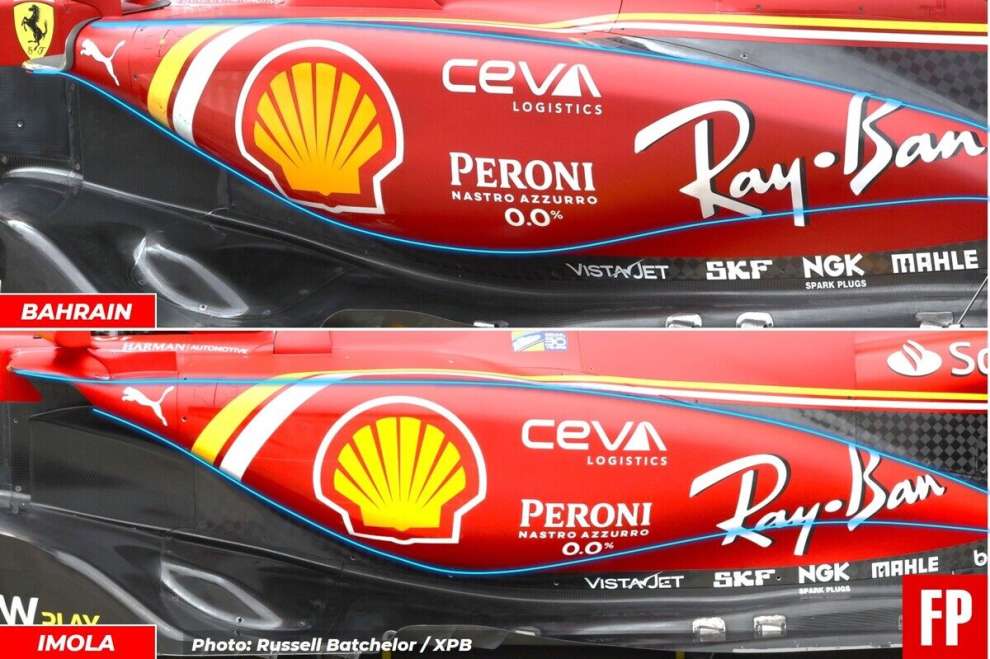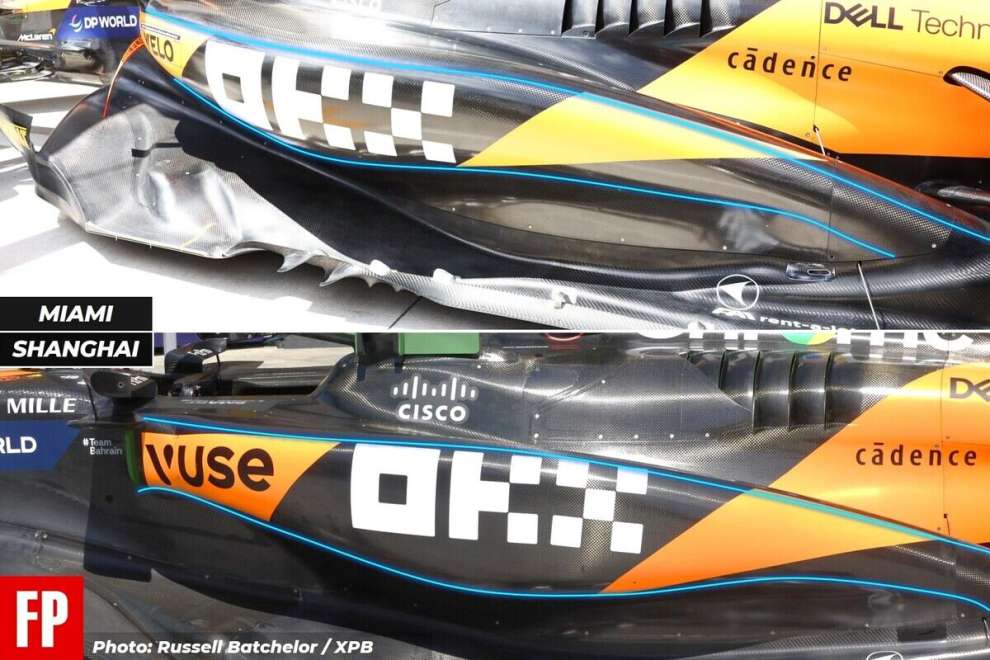By Carlo Platella
There are no normal circuits in Formula 1, in a varied calendar made up of city and permanent circuits, tortuous toboggans and high-speed tracks. However, having to choose the most indicative racetrack, Barcelona would certainly be among the candidates, even more so when it comes after a quartet of races that have offered only partial results. In Spain fast corners and aerodynamic efficiency are once again the protagonistsoffering that test that was still missing to judge the updates of the last month.
A new dimension
In Barcelona the cars travel approximately 78% of the distance with the throttle wide open, a number which represents the third highest value since the start of the championship after Jeddah and Melbourne. With the elimination of the last chicane in 2023, the Spanish track has returned to being a smooth track, with low-traffic sections but characterized above all by large high-speed bends. The characteristics of Barcelona recall those of Suzukawith which it shares an average qualifying lap of around 235 km/h.
Another element in common between the Spanish and Japanese systems is the lack of violent braking. However, there are some important braking sections, the most demanding of which is the one at the end of the home straight with a peak deceleration of 4.9 g, but overall Brembo estimates a severity for the braking system of just 2 out of 5. The data reinforces the image of a smooth circuitwhere you tend to carry a lot of speed into corners and where there is no shortage of 200 km/h or more corners.
If on the latest tracks the longitudinal accelerations experienced in braking and traction near the hairpin bends dominated, in Catalonia the emphasis instead falls on the lateral ones. Indicative is how between Miami, Monte Carlo and Canada they never exceeded 4 lateral g, reaching 4.4 g at Imola, while in Barcelona we will approach the threshold of 5 g. It’s about characteristics that enhance efficiency and aerodynamic stability at low heights from the ground, instead of mechanical grip and agility at slow speeds.
The exam for Ferrari and McLaren
A month has passed since Ferrari introduced the package of updates at its home race in Imola, but the impression is that its full potential has not yet been appreciated. Low speed corners remain an Achilles heel for the SF-24a gap that has not yet been filled: “At the moment I would say that there are more slow corners where we struggled a little more during the first part of the year,” Leclerc explained in Imola. “Obviously these updates that we bring today were conceived many months before, therefore the target for these developments is not yet updated with what the limitations are today.”

The Monegasque then added that the Italian one was not the ideal track to evaluate the updates, inviting us to wait for other races to fully evaluate the benefits. The words of the number 16 suggested that the focus of the new package was more on efficiency and fast corners, aspects that it was not possible to judge between Monaco, Montreal and partly also in Imola. Finally Barcelona will provide the first answers about.
The opposite is true for McLaren, whose updates introduced in Miami have cured its chronic shortcomings in low-mileage corners. “Looks like the car we took to Miami behaves better at low speedsperhaps even beyond expectations”the comment by Andrea Stella. “The picture of our competitiveness is starting to change and slow is no longer a clear weakness”. However, the Team Principal also warned that the performance gain in the slow was slightly to the detriment of the incisiveness in the fast, with the trip to Spain showing how much this compromise has shifted.

Waiting for Red Bull
The great expectation in Catalonia, however, is above all Red Bull. The world champions have won two of the last three races, but even in the successes of Imola and Montreal the RB20 did not shine like elsewhere. To Barcelona Curbs and dips will be less of a concern compared to the latest events, creating the conditions for Red Bull to once again become the reference for everyone. This, however, does not erase the curiosity as to whether the narrow margins seen in the last month were due to the difficulties of Milton Keynes or to an effective recovery of the competition.
Finally there is Mercedes, surprisingly the author of the pole position and fighting for the victory in Montreal. The Canadian one was a circuit that it met the needs of the W15, a car for which the team has so far struggled to find the balance in the transition from slow to fast. The task in Canada was simpler, on a track characterized by curves with similar distances, but this knowledge does not exclude the possibility of a concrete recovery by the Silver Arrows. Once again, Barcelona will provide valuable feedback.

Degradation becomes the protagonist again
Traditionally the Spanish one is a race characterized by high thermal degradation of the tyres, with the long bends that release a lot of energy onto the tyres, especially the front ones. Added to this are the high ambient temperatures, accentuated by the race being moved three weeks later than the last edition, and a medium-high abrasive asphalt which accelerates overheating due to hysteresis.
The choice of is therefore not surprising Pirelli to propose the three hardest compounds in the range, C1, C2 and C3, as well as imposing high inflation pressures, with 25.5 psi on the front, 2 more than in Canada. The forecast is for a two-stop Grand Prix, without excluding the three pit stops, encouraging the teams to work on race pace and degradation. One more reason not to waste even a minute of the two hours of free practice available on Friday.
#Spain #test #updates #Ferrari #McLaren #analysis